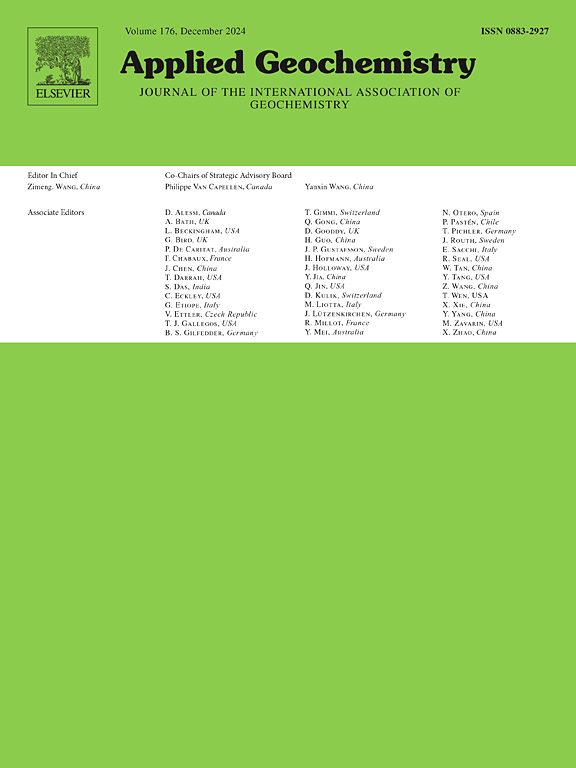Enrichment mechanism of arsenic in deep confined aquifers of Guide Basin under the influence of geothermal activities
Abstract
High arsenic (As) concentrations in groundwater affected by geothermal activity have been reported worldwide, but the genesis mechanism is not adequately understood. To address this issue, 22 groundwater samples and 69 sediment samples were collected from the Guide basin in northwest China for hydrochemical and geochemical analyses and laboratory experiments. Results indicated that Fe/Mn oxide minerals were the main carriers of As, which was proved by a positive correlation between As and Fe or Mn in sediments. Analysis of hydrologic characteristics showed that direct contribution of As from geothermal water to confined groundwater was probably not significant in the Guide basin. Results of laboratory experiments indicated that As release from aquifer sediments was accelerated by increased temperature under different pH and ORP conditions. Raising temperature may stimulate the release of As by promoting dissolutions of As-bearing Fe (hydr)oxides, weathering of As-bearing silicates and As desorption from sediments into groundwater. The research results can not only increase the understanding of arsenic enrichment mechanism in groundwater under geothermal geological background, but also provide a scientific basis for other high-As groundwater with similar geological background in the world.

 求助内容:
求助内容: 应助结果提醒方式:
应助结果提醒方式:


